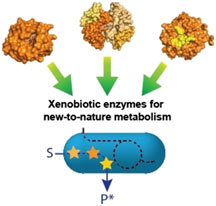What are Xenobiotics?
The word xenobiotic is derived from two Greek words, “Xenos” meaning “Stranger” and “Bios” meaning “life”. The unwanted and harmful chemical agents might go into the human body via numerous paths such as breathing, ingestion, skin contact, and so on. These foreign substances are known as xenobiotics.
These foreign compounds might remain in the type of food, medications, chemical carcinogens, additives, preservatives, or toxins.
Besides, foreign molecules are also produced in the intestinal tract via microbial enzymatic activities upon normal digestion products. Xenobiotics can produce a range of biological results, including pharmacologic reactions, poisoning, immunologic reactions, and cancer.
Detoxificationand Biotransformation
Most of these foreign compounds undergo metabolic processes (chemical change) in the body. In the past, the metabolic procedures that cause the configuration or disposition of foreign compounds have actually been described as detoxification mechanisms. Nonetheless, the term is not constantly suitable, due to the fact that the detoxified products are occasionally extra hazardous than the original substance.
Biotransformation has actually been suggested as a more suitable term. The main function of the biotransformation procedure is to transform the lipophilic, nonpolar, harmful substance to more polar, water-soluble kinds to decrease the permeability of toxic compounds through the lipid cell membrane, therefore, protecting cell interior as well as facilitating their excretion from the body with urine or bile.
Mechanism of Detoxification of Xenobiotics
The liver is the primary body organ in charge of the detoxification of xenobiotics. The detoxification reactions of xenobiotics are grouped into two phases i.e., Phase I reactions and Phase II reactions. The pathways for hepatic detoxing include either:
- Oxidation
- Reduction
- Hydrolysis
- Conjugation
- Some combinations of all these metabolic reactions
Phase I Reactions
Phase I reactions involve oxidation, reduction and hydrolysis and also metabolites may be secreted without further reactions or is ultimately conjugated with conjugating agent (phase II reaction) for excretion.
- Oxidation
A lot of foreign substances that include alcohols, aldehydes, amines, aromatic hydrocarbons as well as certain medicines are destroyed in the body by oxidation.
- Hydroxylation
Hydroxylation is the primary reaction associated with the oxidative metabolic process of foreign substances, catalyzed by monooxygenase or cytochrome P450 (so-called because the enzyme absorbs light at 450 nm, P represents pigment). Monooxygenase enzyme is likewise called mixed-function oxidases (MFOs).
Microsomal cytochrome P450 enzymes hydroxylate many xenobiotics such as medications, carcinogens, and environmental agents (contaminants). Their hydroxylated products are extra water-soluble facilitating their excretion. Around, 50% of the medications that are ingested in human beings are metabolized by microsomal cytochrome P450 enzyme.
- Reduction
Decrease is less usual than oxidation. The major team of substances that are reduced and also cleansed by the liver are azo substances and also nitro compounds. Some crucial reactions are:
- Aldehydes may be reduced to an alcohol, e.g.
Chloral àTrichloro ethanol
- Aromatic nitro substances are reduced to amines,
Picric acid à Picramic acid
- Compounds with S-S bonds reduced to -SH, e.g.
Disulfiram à Dithiocarbamic acid
- Hydrolysis
Foreign substances that are esters, amides or glycosides go through hydrolysis by esterases, amidases and also glycosidases, e.g.
Aspirin à Salicylic acid + Acetic acid
Cyclohexane à Cyclohexane Diol
Phase II Reactions
In phase II, the hydroxylated or other substances created in phase I are transformed by specific enzymes to numerous polar (water-soluble) metabolites by conjugation reactions. Conjugation indicates a chemical combination of one substance with a few others.
Xenobiotics may undertake conjugation reactions without prior metabolism (Phase I reaction) yet conjugation occurs more frequently as a phase II reaction, after initial modification of the molecule by phase I reactions (oxidation, reduction, and hydrolysis).
The effect of conjugation is to make the substance more polar (water-soluble) and also consequently, even more quickly eliminated in the urine or bile. Several conjugating agents are known. These are as follows:
- Glucuronic acid
- Glycine
- Glutamine
- Cysteine
- Glutathione
- Acetyl-CoA
- Phosphoadenosyl phosphosulfate (PAPS)
- S-Adenosyl methionine (SAM)
- British antilewisite (BAL)

